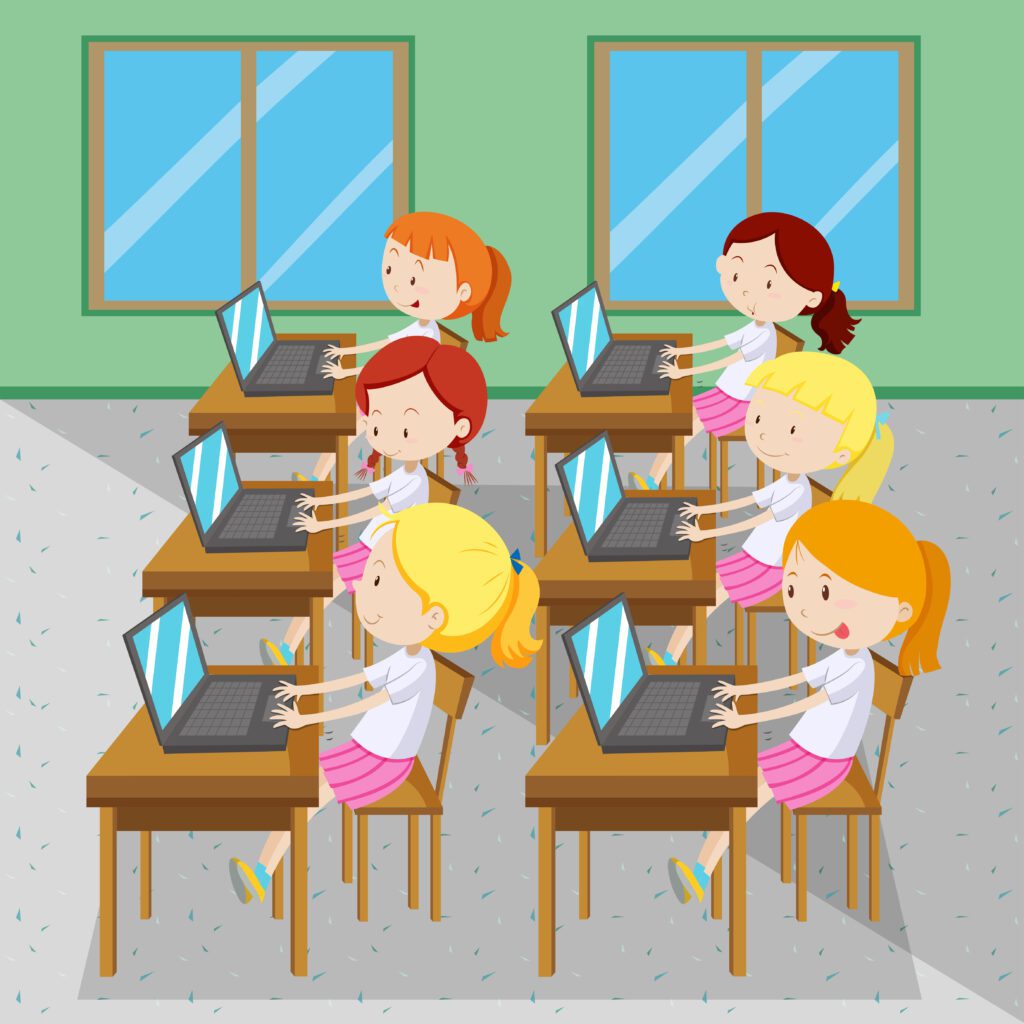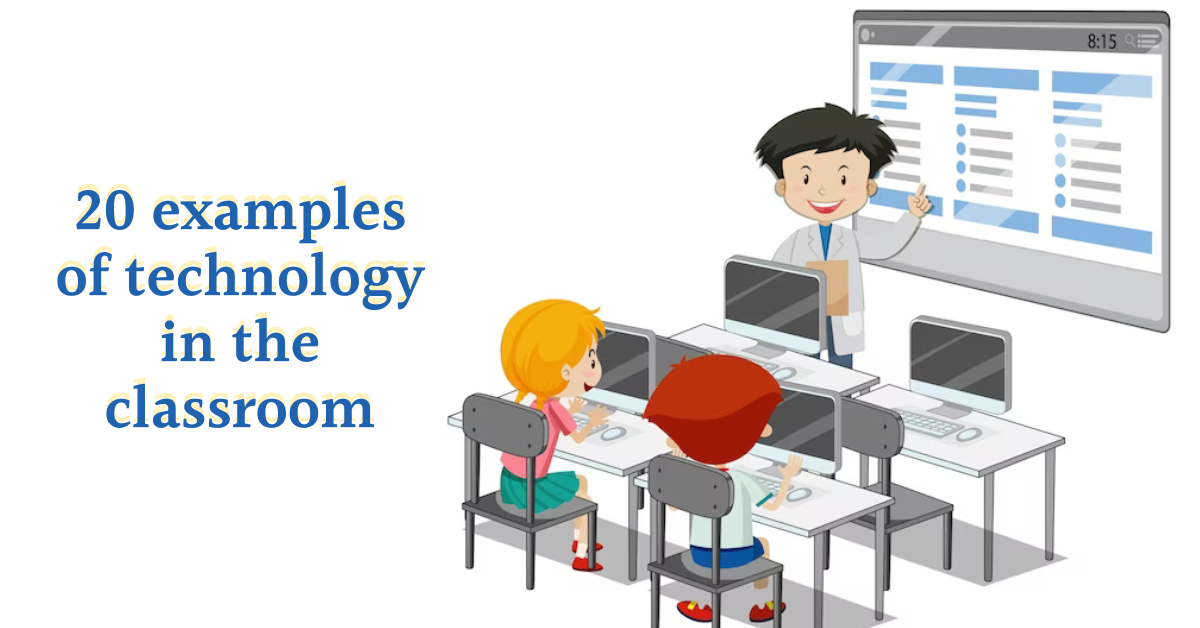In today’s digital age, technology has revolutionized various aspects of education, and classrooms are no exception. Integrating technology into the learning environment can enhance engagement, interactivity, and overall learning outcomes.

Examples of technology in the classroom
In this article, we will explore 20 examples of how technology is being effectively used in the classroom to create a dynamic and modern learning experience.
| No. | Technology Example | Description |
|---|---|---|
| 1 | Interactive Whiteboards | Digital boards that allow interactive lessons and multimedia presentations. |
| 2 | Educational Apps | Mobile applications offering interactive learning and educational games. |
| 3 | Virtual Reality (VR) | Immersive simulations and virtual field trips for better understanding. |
| 4 | Online Collaboration Tools | Platforms for students and teachers to collaborate on projects and assignments. |
| 5 | E-books | Digital textbooks and reading materials accessible on tablets and e-readers. |
| 6 | Gamification | Utilizing game elements to make learning more engaging and enjoyable. |
| 7 | Educational Websites | Websites with educational content, quizzes, and resources for self-learning. |
| 8 | Video Lectures | Pre-recorded video lessons to complement in-class discussions. |
| 9 | 3D Printing | Creating physical models to aid in understanding complex concepts. |
| 10 | Online Assessments | Conducting quizzes and exams electronically for instant feedback. |
| 11 | Digital Simulations | Simulating real-life scenarios to enhance critical thinking skills. |
| 12 | Podcasts | Audio-based content for auditory learners and supplemental materials. |
| 13 | Learning Management Systems (LMS) | Platforms for managing course materials, grades, and communication. |
| 14 | Cloud Storage | Storing and accessing educational resources on cloud-based platforms. |
| 15 | Language Learning Apps | Apps designed to help students learn new languages efficiently. |
| 16 | Online Video Platforms | Using platforms like YouTube for educational video content. |
| 17 | Digital Note-taking Tools | Taking and organizing notes electronically for easy access. |
| 18 | Augmented Reality (AR) | Overlaying digital information onto the real-world environment. |
| 19 | Online Tutoring | Connecting students with tutors for personalized learning sessions. |
| 20 | Student Response Systems | Classroom clickers and polling apps for instant student feedback. |
These examples demonstrate how technology can cater to diverse learning styles, make complex topics more accessible, and foster collaboration among students. However, it’s crucial for educators to strike a balance between technology and traditional teaching methods, ensuring that technology enhances the learning experience without replacing human interaction and critical thinking.
In conclusion, technology in the classroom has the potential to transform education by providing a more interactive, personalized, and engaging learning environment. Embracing these technological advancements prepares students for the digital world while equipping them with essential skills for their future endeavors. As technology continues to evolve, educators must stay updated and explore innovative ways to integrate technology effectively and meaningfully into the classroom setting.

